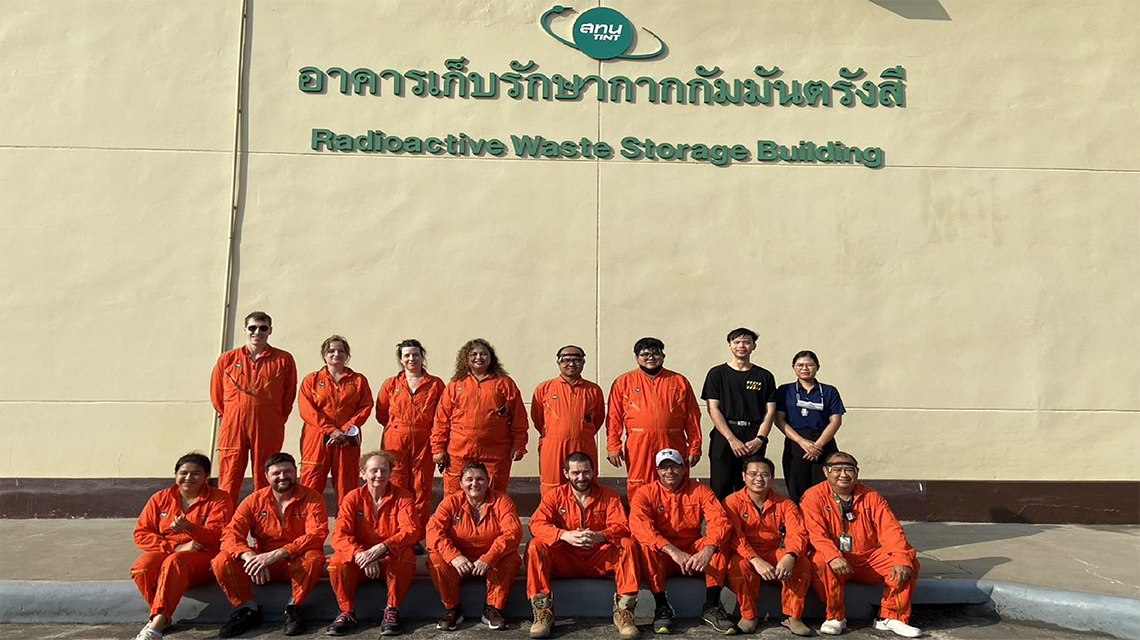Canada will recycle disused radioactive sources from Thailand in order to support innovative cancer treatments, as part of an international IAEA initiative. The Global Radium-226 Management Initiative is designed to connect countries in possession of old radiotherapy sources with those interested in recycling or reusing them.
As part of this initiative, over 65 countries are participating as holders of disused radium-226 sources, coordinating this legacy to be transferred to partners with advanced technology to recycle the radium-226 and produce live saving radioisotopes.
Canadian Nuclear Laboratories (CNL) received two shipments of disused radium-226 sources from the Thailand Institute of Nuclear Technology (TINT) for further recycling, which will contribute to rare innovative cancer techniques.
Radium-226, discovered in 1898 by Marie Sklodowska-Curie and Pierre Curie, was formerly used in radiotherapy but has since been replaced by other sources. Today, it serves as a feedstock for the production of the radioisotope actinium-225, which is so rare that annual global production is less than a grain of sand.
Actinium-225 is an alpha-emitting source known to be effective in destroying malignant cells in targeted cancer treatments. It allows for targeted radiotherapy as it can be placed close to the tumour and will kill cancerous cells without damaging nearby healthy tissue.
Many countries around the world have legacy stocks of radium-226, but not all of them have the recycling capabilities needed to make the most of this valuable resource. "The Global Radium-226 Management Initiative is supporting both the long-term management of these sources as well as the increased availability of actinium-225," said Olena Mykolaichuk, the Director of the IAEA's Division of Nuclear Fuel Cycle and Waste Technology. "We are encouraged by the proactive engagement we have seen lately in this area."

Staff members from CNL and TINT after the second Ra-226 repackaging (Photo: Archara Phattanasub/TINT)
"The IAEA has long championed the safe storage and disposal of disused sealed radioactive sources, which has always been appreciated and supported by Canada," said Jack Craig, President and CEO of CNL. "However, their initiatives to assist donor nations in removing long-term liabilities while enabling a new radiotherapeutics industry is monumental. CNL is also grateful to the Kingdom of Thailand and our new international collaborators, TINT, for their contribution to this new class of cancer therapeutic drugs."
TINT first reached out to the IAEA about this project in February 2022 and met with CNL later that year. After TINT confirmed the receipt of their export license in June 2023, over 70 packages of disused radium-226 were sent to Canada.
The international transfer of radioactive material is a multifaceted endeavour requiring close collaboration among several entities, including regulatory bodies (in Thailand, it is the Office of Atoms for Peace) and port authorities. Diligent work in radiation and contamination monitoring, source inspection, characterization and repackaging, is performed with IAEA support prior to shipment.
"Thailand, through TINT, has successfully transferred the radium-226 sources to Canada with great support and excellent coordination from the IAEA and relevant authorities of both countries," said Thawatchai Onjun, Executive Director of TINT.
TINT constructed a dedicated radioactive waste storage facility at its Ongkharak site in 2013 which became functional in 2016. "Recycling these sources has multiple benefits for Thailand and is in line with circular economy objectives," said Archara Phattanasub, Head of the Radioactive Waste Technology and Development Section in TINT. "This initiative has helped up significantly reduce the risk for any type of incident associated with these disused sources and freed up a lot of space in our national storage facility."
Looking ahead, there are several more transfers planned for 2024 as part of this initiative. Shipments from Curaçao, El Salvador, Fiji and Slovenia are set to take place later this year. In December, the IAEA will host a technical meeting on the initiative to review progress, examine lessons learned and identify future opportunities for collaboration.
"The collaboration exhibited by CNL and TINT serves as a great example of how to effectively conduct complex source transportation operations with many moving parts," said Mykolaichuk. "Fostering sustainable practices is a key element of the IAEA's mandate, and we look forward to delivering on this initiative for many years to come."






